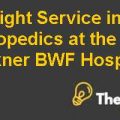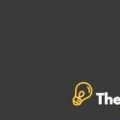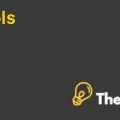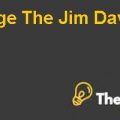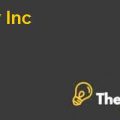
INTRODUCTION
Hansson Private Label Inc., was established in the year 1992 by Tucker Hansson when he purchased Simon Health and Beauty Product’s assets. The company was manufacturing a range of personal care products that included mouthwash, shaving cream, soap, shampoo, and sunscreen. The companybecamea leading organization through its selling strategy, and its revenues were generated through strong retailers, from where consumers were purchasing the company’s products. These retailers includedCostco which is a club store, Wall-Mart as mass merchants, Kroger as supermarkets, and Dollar General as dollar stores.
Tucker Hansson as the CEO of the Hansson Private Label Inc., was leading the company and due to his efforts and effective management skills, the companywas considered among the leading companies in the personal care products industry. Under his management, the company enjoyed a sound financial performance, and continued to perform exceptionallyfor almostfive years; from 2003 to 2007.
The company’s growth was around 8% in fiscal year 2004 to 2005, in fiscal year 2006 the growth was 8.3% higher than the previous fiscal years and in 2007, company faced1.3% decline in the growth. From this historical growth, it showed how consistently the company was performing and from the historical gross margins it wasshowing the positive results from 2003 to 2007. The net income of the company was also showing the positive results. From these historical growth and gross margins incremental results, it shows how the company was maintaining its growth in terms of revenue generations.
On the other hand, the company has the potential for further growth, if Hansson Private Label Inc.,increases its sales per unit byeffective marketing and selling strategies. Thiscould also be achieved through creating partnership alliances with its retailerswhich would result in maximum profit near future and it would assistin the expansion of the company.Hansson predicted that annual selling price would grow at the rate of 2 percent, growth of raw-material cost would be around 1% annual, and manufacturing overhead and maintenance expense would grow 3% annually, labor cost on average would grow by 3.5% and selling expenses would grow around by 7.8% annually. These projections are for the next 10 years, starting from 2009 to 2018.
Q - 1. Using assumptions made by Executive FP of Manufacturing, Robert Gates, Estimate the Project’s free cash flows till 2018 only. Are Gates’ projections realistic? If not, what changes might you incorporate?
Ans - 1.
From the analysis shown in the Excel sheet under the projection of free cash flows,keeping the assumptions taken by the Robert Gates, it shows that Robert Gates projections are realistic and all the assumptions are also realistic and it is because of the reason that the free cash flows are positive in the upcoming years except forthe projection of the year 2009 which is in negative. Other than the 2009 projections, it shows the increasing trend in the upcoming years.
Q - 2. Analyze the fixed costs and variable costs per unit? Are the forecast of these costs reasonable? Would you propose an additional analysis or recommendations?
Ans - 2.
The calculations done in excel show the fixed cost that is $1.77per unit and it would remain at $1.77 per unit till fiscal year 2018 and this per unit fixed cost would be affordable for the Hansson Private Label Inc. On the other hand variable cost per unit would change as per the production requirements, and if company would face the declining trend, then the variable cost per unit would change accordingly and if company would face the increasing trend in the market demand of its products then the variable cost per unit would also change accordingly. This declining and incremental changes in per unit variable cost is directly proportionate to the production level.
Q - 3. Using CFO Sheila Dowling’s Projected WACC, What discount rate should be considered? What flaws, if any, might be inherent in using current WACC as a discount rate?
Ans - 3.
The projection about the cost of capital, which is 9.38% that had been made by ShielaDowling, who is the CFO of Hansson Private Label Inc., this cost of capital is showing the capital structure of the company....................
This is just a sample partial case solution. Please place the order on the website to order your own originally done case solution.

